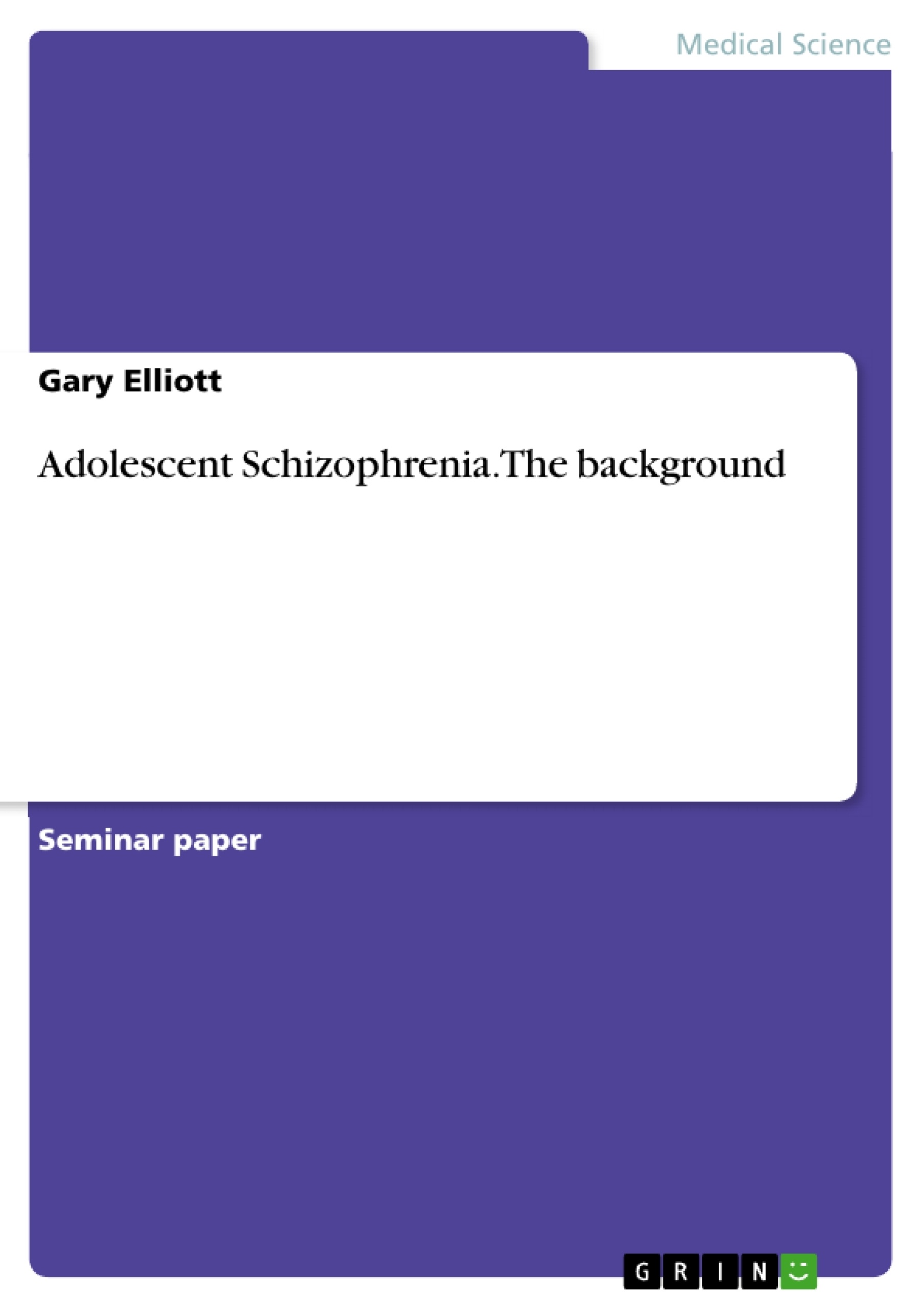Adolescent schizophrenia is a largely misunderstood, under-studied area of schizophrenia. Adolescence is a period of development marked at the beginning by the onset of puberty and at the end by the attainment of physiological or psychological maturity (Dictionary of Psychology). Schizophrenia may be defined as a general label for a number of psychotic disorders with various cognitive, emotional and behavioural manifestations and is a term that originated with Eugen Bleuler in 1911 as a replacement for the term Dementia Praecox.
The above definition may seem a little too academic, but the term literally refers to a ‘splitting in the mind’; a dissociation between emotions and cognition. Schizophrenia is a severe brain disease that results in a person losing touch with reality. The disease is accompanied by hallucinations, delusions, disorganized speech and behaviour, among others. These are just a few of the accompanying symptoms but together they affect social interactions and thought processes and have serious impact on the functioning of the sufferer.
We do not know exactly what causes schizophrenia, but it affects 1 in 100 people and is one of the most serious mental disorders (Furnham, 2008). The lifetime prevalence of schizophrenia in the United States of America is about 1 percent. The age of onset for schizophrenia occurs earlier in males than females, with the age group 16-25 years of age having the highest prevalence rates (Castle & Murray, 1993). Although the disease usually appears in late adolescence or early adulthood, seemingly without warning, it is a gradual disease that develops over many years (Gur & Johnson, 2006). Schizophrenia is very rare before age 11 but symptoms can appear as early as the mid- to late teens and are usually seen before age twenty; with most cases developing between age fifteen and twenty-five (Haycock, 2009). As such, a diagnosis is seldom made before age 18 (early-onset schizophrenia) and after age 50.
While the symptoms of schizophrenia may cause psychotic behaviour, most are not particularly violent and will not strike out at other. As little as 4% of violent acts are committed by people with schizophrenia and homicides by those who suffer with the disease is approximately 1 in 3000 cases. We admittedly still know very little about schizophrenia and are ...
TABLE OF CONTENTS
1.Schizophrenia – the background
1.1.Introduction and Definitions
1.2.History of Schizophrenia
1.3.Early Treatment
2.Causes of Schizophrenia
2.1.Brain Abnormalities
2.2.Genetics
2.3.Environment
3.Schizophrenia Types
3.1.Paranoid Schizophrenia
3.2.Disorganized Schizophrenia
3.3.Catatonic Schizophrenia
3.4.Undifferentiated Schizophrenia
3.5.Residual Schizophrenia
4.Symptoms
4.1.Positive Symptoms
4.2.Negative Symptoms
4.3.Gender
4.4.Suicide
5.Warning Signs
5.1.In Early Childhood
5.2.In Adolescence
5.3.Prevention
6.Diagnosing Schizophrenia
7.Other Conditions (Schizophrenia-like)
7.1.Bipolar Disorder
7.2.Psychosis
7.3.Alzheimer’s Disease
8.Medication and Schizophrenia
9.Therapy and Schizophrenia
10.Hospitalization as an Option
11.Conclusion
12.Appendices (Diagnostic Criteria)
12.1.Appendix A – Paranoid Type
12.2.Appendix B – Disorganized Type
12.3.Appendix C – Catatonic Type
12.4.Appendix D – Residual Type
13.References
- Citation du texte
- Gary Elliott (Auteur), 2010, Adolescent Schizophrenia. The background, Munich, GRIN Verlag, https://www.grin.com/document/275087
-

-

-

-
Téléchargez vos propres textes! Gagnez de l'argent et un iPhone X. -

-
Téléchargez vos propres textes! Gagnez de l'argent et un iPhone X. -

-
Téléchargez vos propres textes! Gagnez de l'argent et un iPhone X. -

-
Téléchargez vos propres textes! Gagnez de l'argent et un iPhone X. -

-
Téléchargez vos propres textes! Gagnez de l'argent et un iPhone X. -

-
Téléchargez vos propres textes! Gagnez de l'argent et un iPhone X. -

-
Téléchargez vos propres textes! Gagnez de l'argent et un iPhone X.

